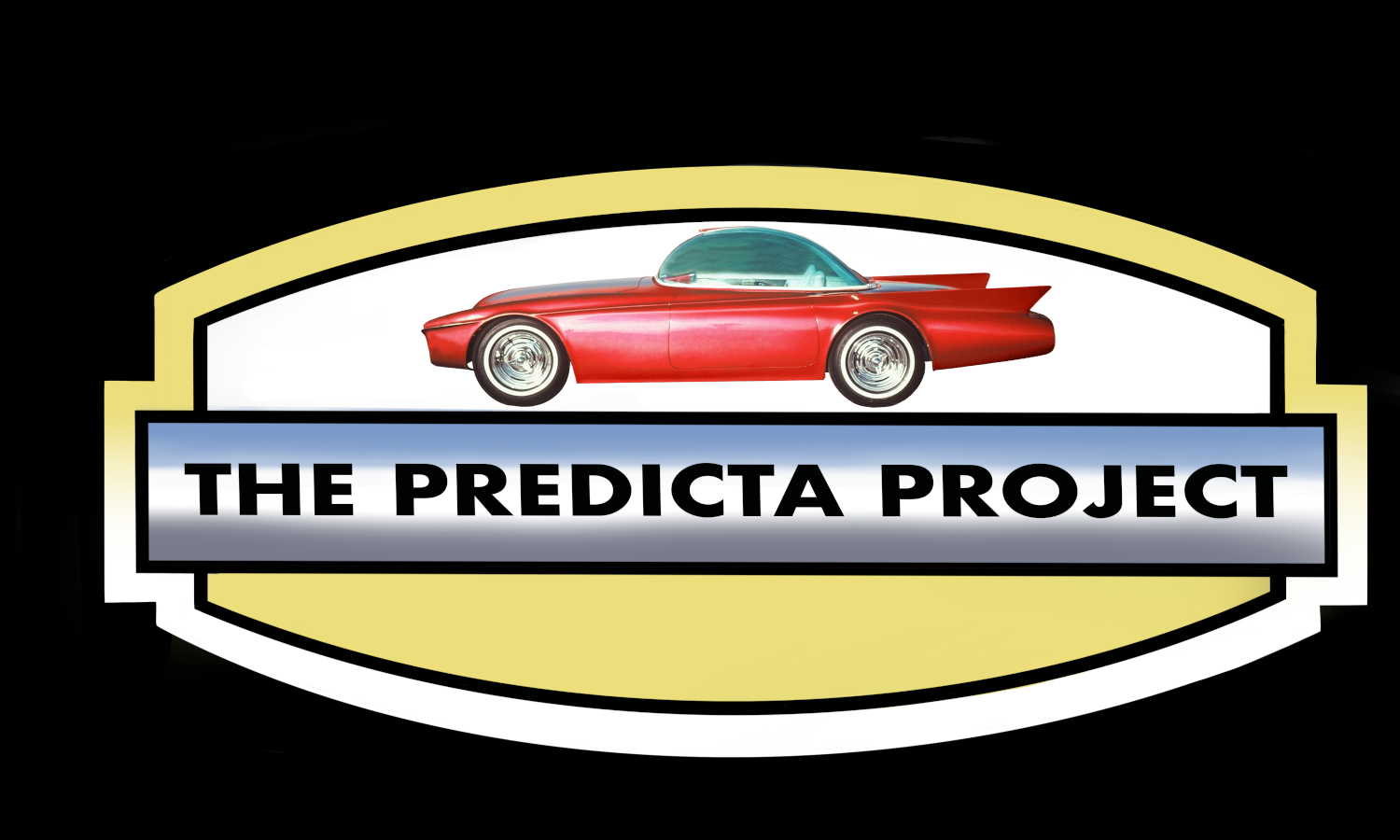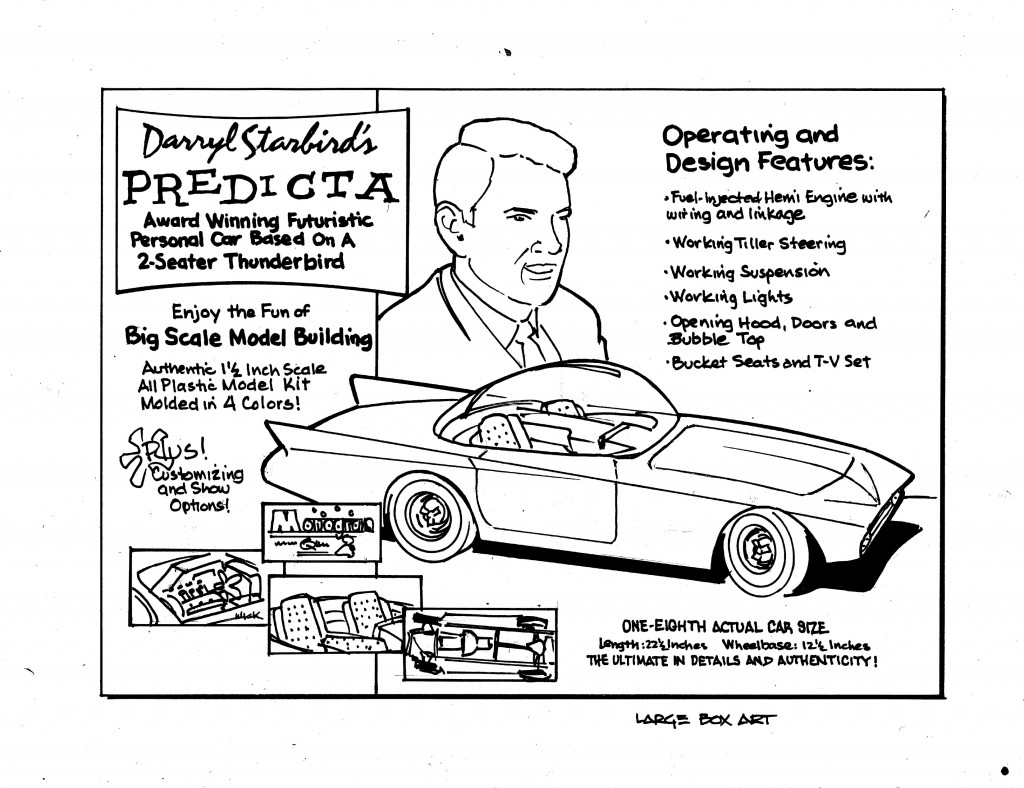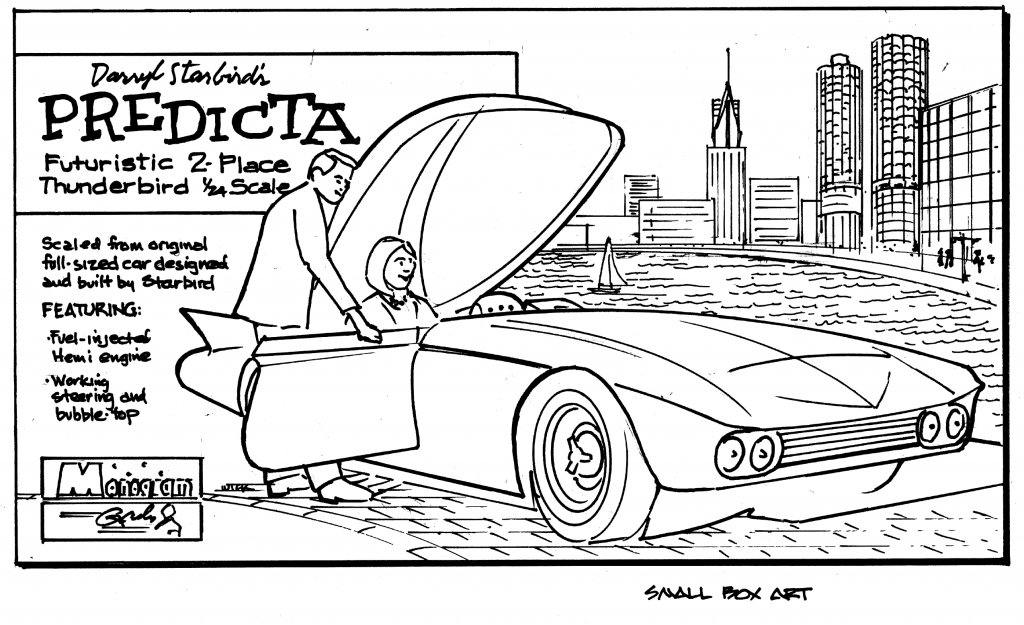Starbird was appointed the custom car consultant for Monogram Models, starting in 1961. In late 1962, Monogram exec Bob Reder contacted Starbird and offered the buy the Predicta and suggested that the car be restyled, freshened, and painted candy red, in anticipation of a kit that Monogram would issue (Monogram had previously offered models of Starbird’s Big Deuce, Futurista, and had offered kits with Starbird custom design elements: the 1958 Thunderbird, the ’40 Ford pickup, and the 1955 Chevy kit). Later, Monogram offered a model kit of Starbird’s Ultra Truck (renamed the Orange Hauler when Monogram issued the kit). Starbird agreed and the rest is a wonderful and rich history.
When a model kit is made, the vehicle is meticulously measured and then highly-skilled kit engineers (such as Monogram’s legendary Roger Harney to whom this Project is partially-dedicated) have skilled craftsmen drawing the plans that created that the model makers use to make scale reproductions of the part (usually in 1/10 scale) after the die makers transfer those dimensions and shapes to the two-part injection tools. Many years ago, Roger Harney loaned me the original Monogram Predicta kit engineering documents. With permission, I copied the same and returned the originals to Mr. Harney to whom I repeated my heartfelt appreciation. This drawing shows the body, the bubble top ring, and the Chrysler engine block. Here are a couple of the many drawings that will be presented in my book.

From those and many other drawings, Monogram created a wonderful kit in 1964 of Starbird’s creation. Here are a sample of those kits:
This is the first kit version. This flat box was probably derived from the early “PC”-prefix vintage hot rod kits (1930 Ford coupe, 1930 Ford Phaeton, 1936 Ford Coupe/Phaeton, 1940 Ford Pickup, Yellow Jacket and others) and was ideally suited to the relatively flat body of the Predicta model.


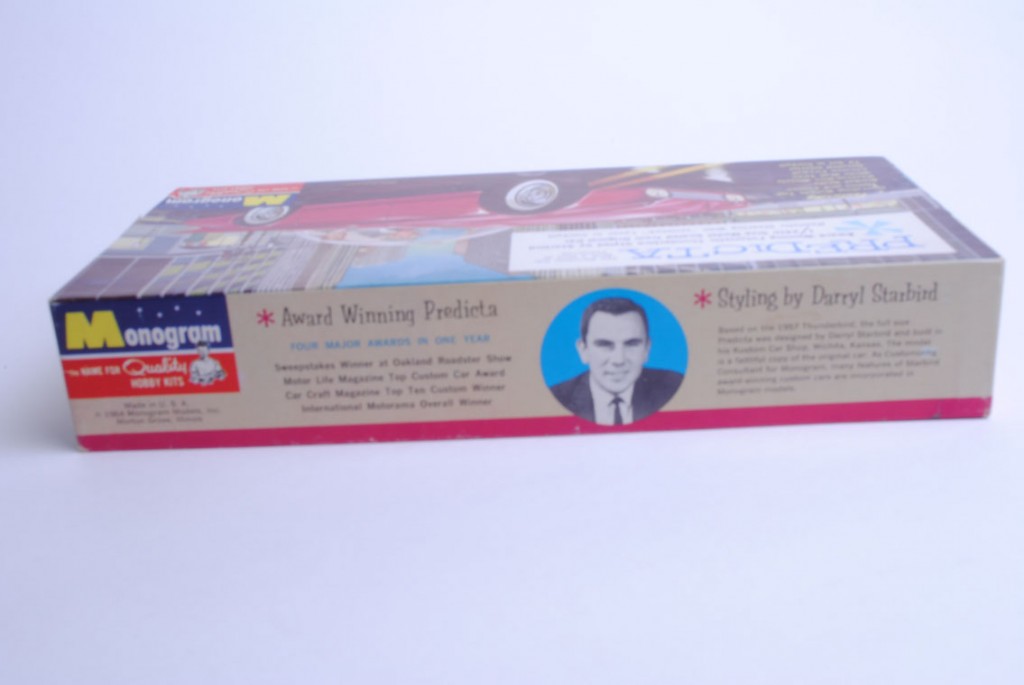
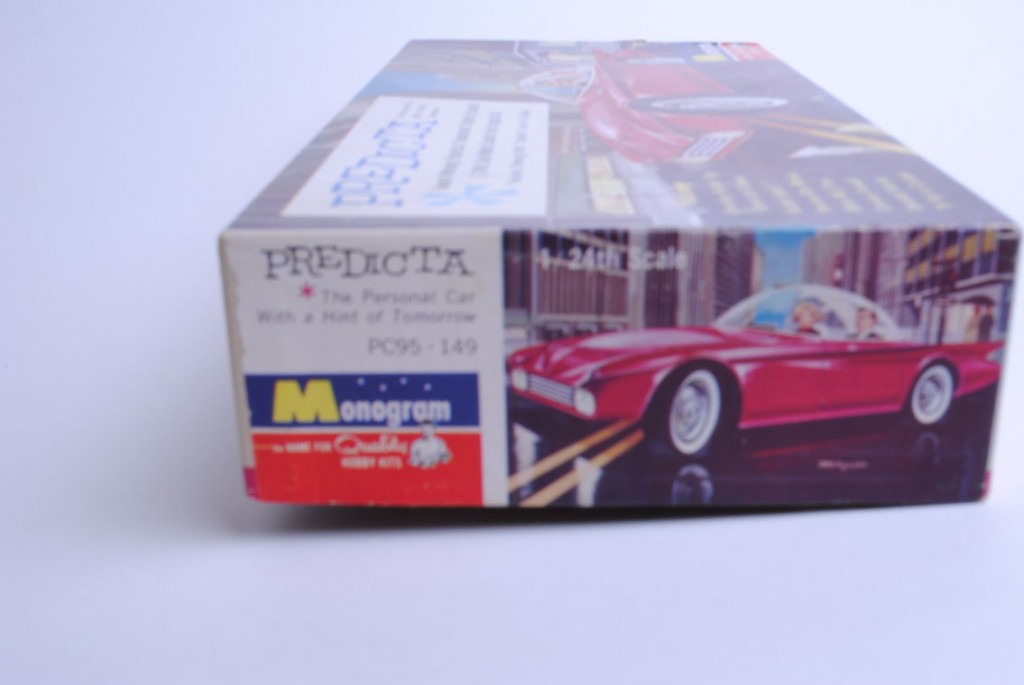
In this box, two versions of the kit were issued: the very common solid red plastic version and this exceptionally rare pearl red plastic version that was quickly discontinued because of production problems in getting the metallic powder to distribute evenly. While there is no authoritative information available, Roger Harney once mentioned to me that less than 1,000 of the parl red plastic version were issued before being withdrawn and discontinued in preference to the now-famous solid red color.
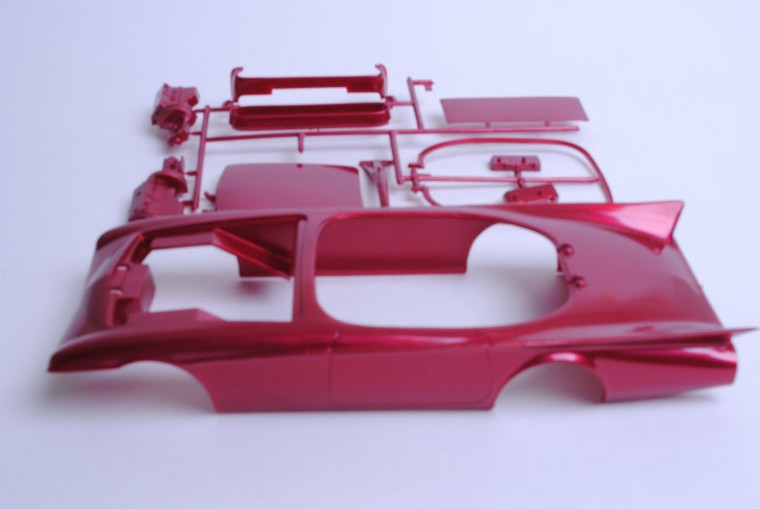
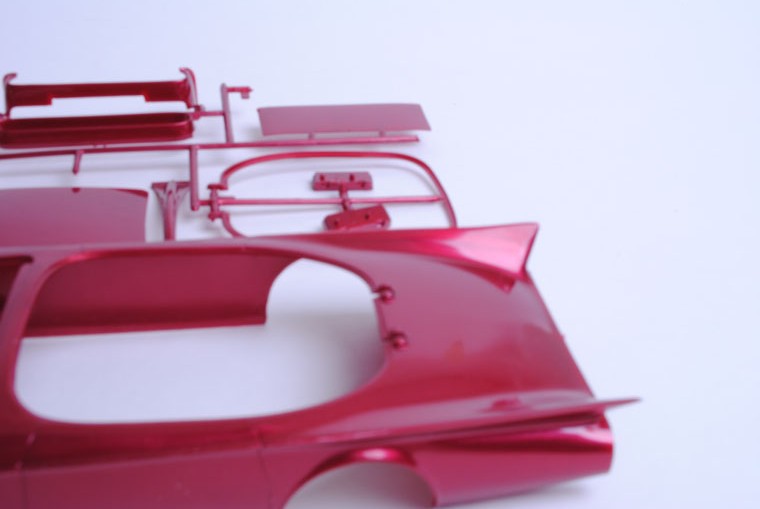
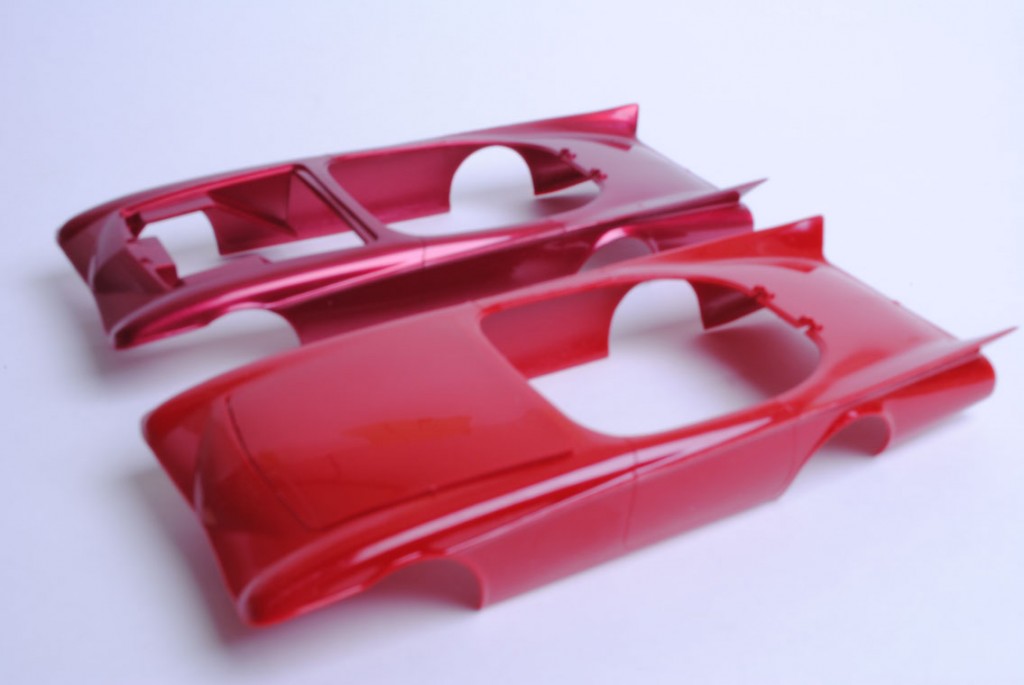
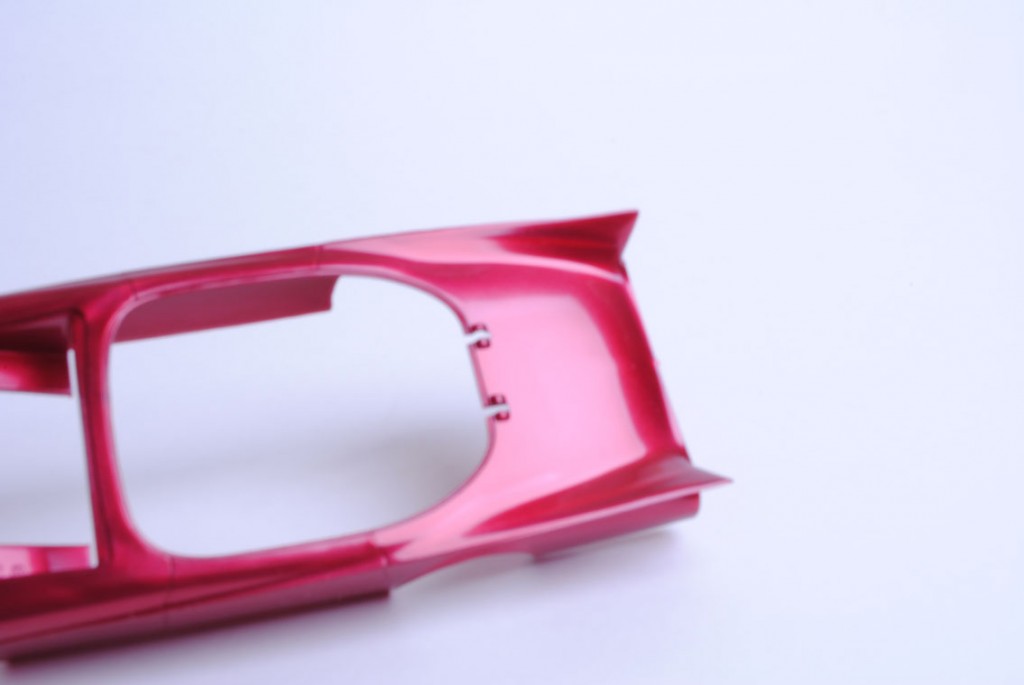
Each kit in the original box came with the instruction sheet, decals, the then-current Monogram catalog and Starbird’s really cool “From cArbs to customiZing” booklet that featured a lively text by Darryl — this booklet is available here in its entirety.
By 1965, the kit was reboxed as part of an overall corporate design change. This first version of the new more ‘square’ box is very unusual these days. The photo on the cover was reportedly taken at the 1964 New York Auto Show. The color printing portrayed the car as having almost a candy cinnamon paint job which was certainly inaccurate. This version of the kit contains the solid red plastic model; the Starbird booklet was gone as was the Monogram catalog. The color was deep and rich, and suggested a slight pearl cinnamon overtone to the paint that the car didn’t have.

By 1967, the box art (same box size) was tweaked a bit. Essentially a section of the artwork from the 1965 version, the box art contained the white border design of the fresh Monogram design. The copyright notice on the box showed 1965 and 1967. The same original kit number – PC 150 – remained, and the kit price was $1.50 at this point – one cent more than the first (1964) version!There was no difference in the color (still the solid red) and quality of the plastic of the model; as in the 1965 copyright kit, the Starbird booklet was gone as was the Monogram catalog. After being on the market through 1968 or so, the kit was withdrawn from domestic production.


At about the same time as the issuance of the third version of the box art, the kit was apparently issued for distribution in New Zealand. The kit had no lid, and opened from two end panels on the long side of the box, and was originally shrink-wrapped. The side panel copyright notice – identical to the United States version except for the copyright notice – contained the interesting notation found in next photo caption. “Copyright 1965 & 1967 Monogram Models Inc. Morton Grove. All rights reserved. Made, printed and packed in New Zealand by E. Allan Brooker Ltd. Auckland”
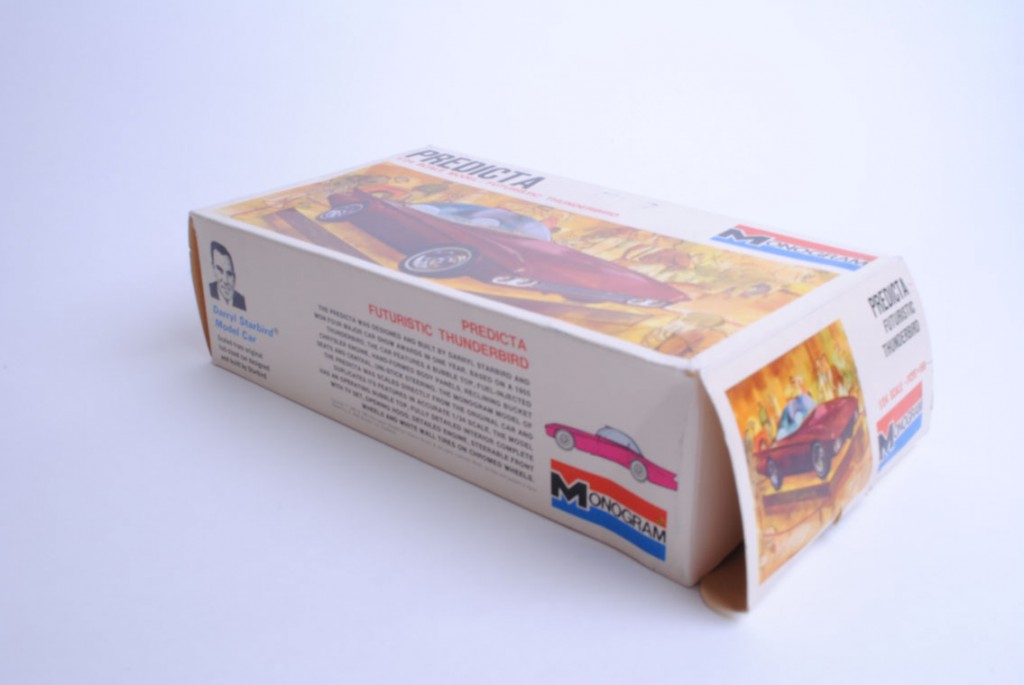
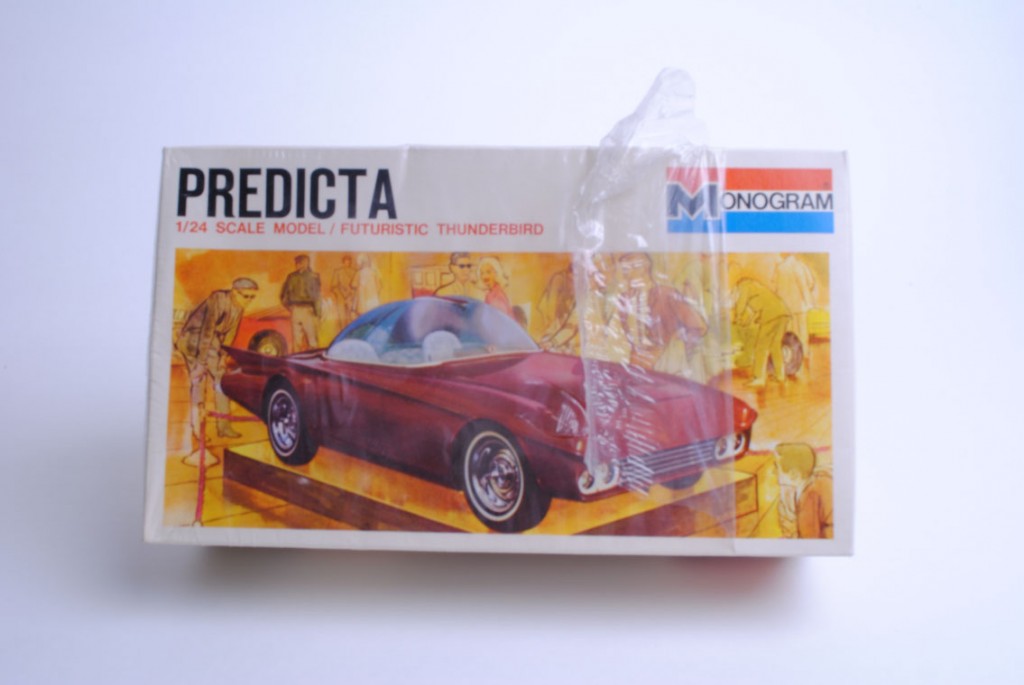
In 1990, I received a great call from Monogram exec Ed Sexton who asked if I would like to assist with a reissue of the Predicta kit (Ed and I had been good friends for several years). I quickly and enthusiastically told him I’d be honored to do so. In the process of working on the reissue, Ed sent me parts for roughly two Predicta kits shot in a milky, matte white plastic. I looked the stuff over and everything appeared to be in great shape — the tool’s trip back from New Zealand had been uneventful. These parts are some of the most rare of all Predicta memorabilia.
Ed also asked me if I would build the box art model – Wow! I called Darryl Starbird for the lacquer formula and then tried to duplicate it on this model but my paint turned out too dark. Monogram attempted to mimic the ‘futuristic’ box art of the second issue of the kit with a photo of my model imaged in front of fresh artwork. This model now sits in Darryl’s Rod & Custom Hall of Fame and sits in a case, next to the real car. I was honored to present this model to Darryl in 1996.
In early 2000, good friend Ed Sexton called again and told me that Revell-Monogram LLC would be re-issuing the Predicta kit again as part of its “Monogram Classics” series. He asked if I could provide a color photo of the exact image used for the 1965 box, but I couldn’t help him: I’ve never had that photo in my very extensive collection! As it turned out, Ed’s crew reused the 1965 image though the color reproduction of the car is inaccurate by still being too cinnamon in tone (but better than any of the previous boxes!).
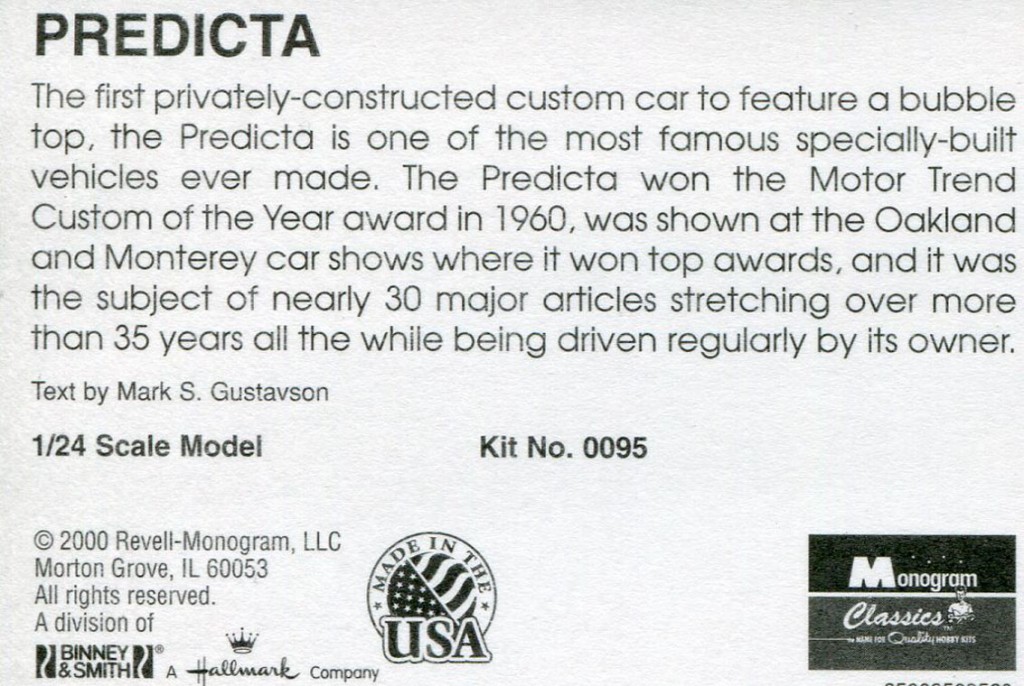

I will always be grateful to Ed for the privilege of helping out with the re-issuance of this kit. I can’t say often enough how much I appreciated that great opportunity.
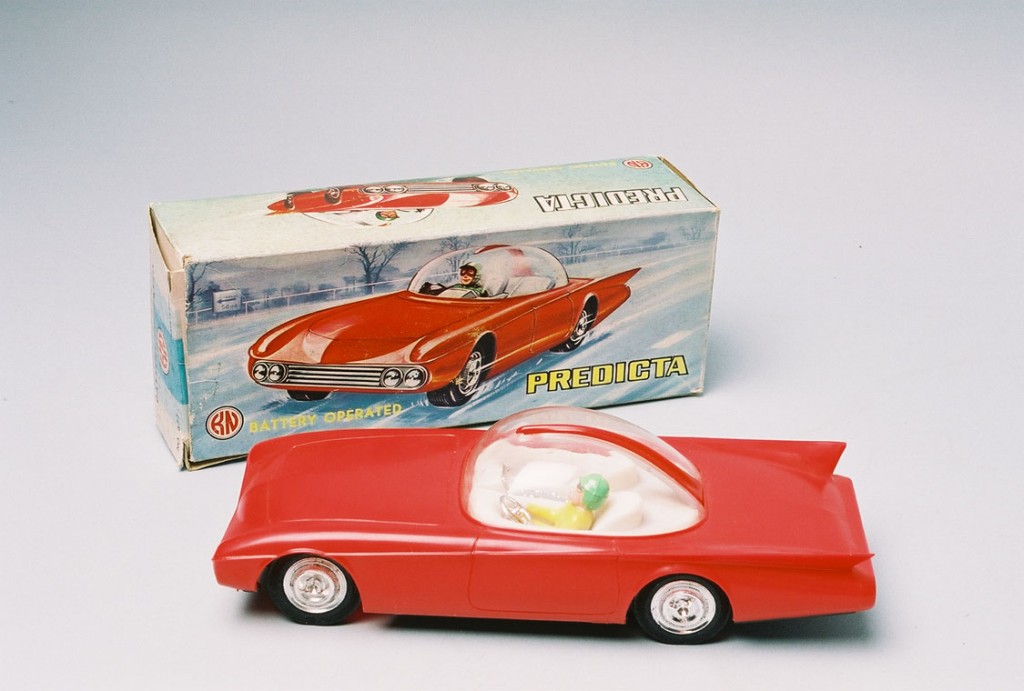
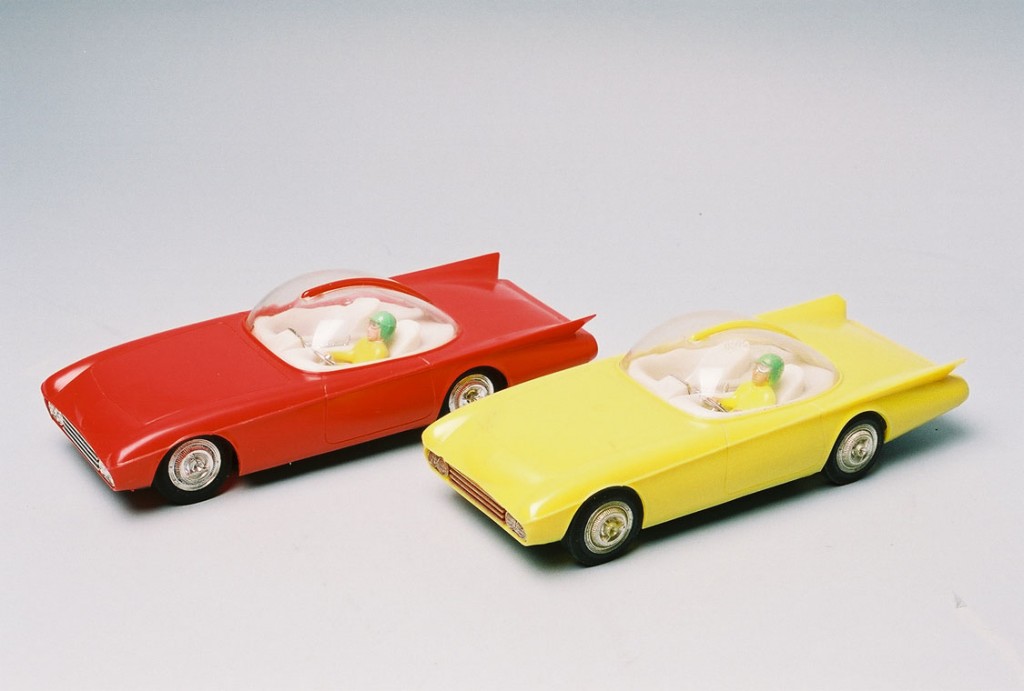
The box is in remarkably good shape as is the model. Check out the cool box and the green helmeted driver with a steering wheel. This toy was apparently ripped off directly from the Monogram model—the measurements exactly match the kit! The bubble top does not rise, and the hood doesn’t open. No date is given anywhere on the box.
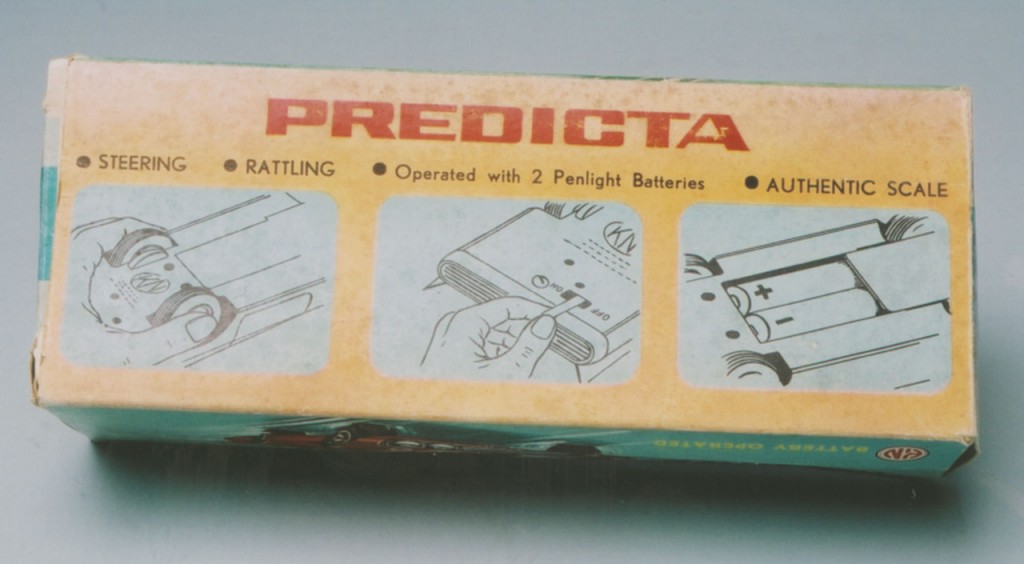
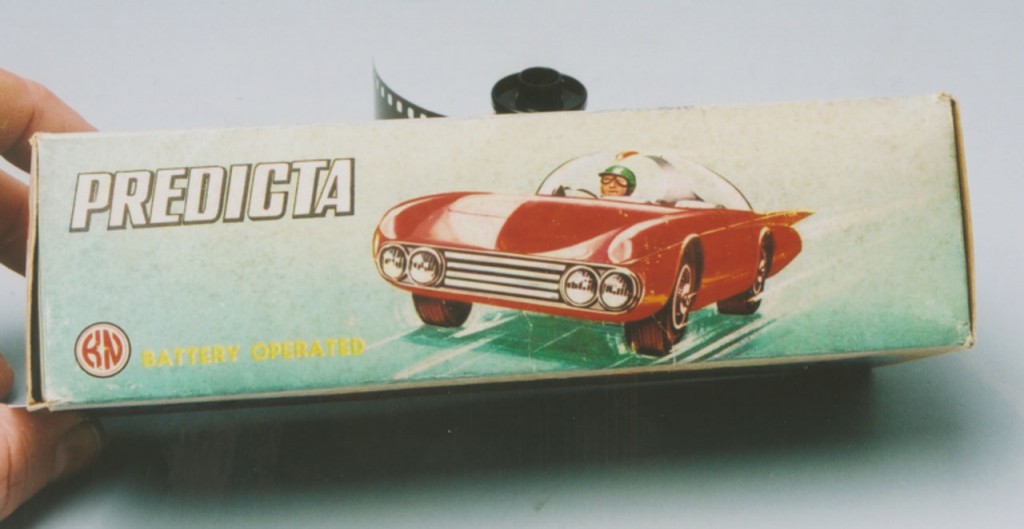
The red toy is battery operated. The long rectangular piece – placed near the center of the underneath of the model – slides forward and permits the placement of two AA batteries. The switch is the long metal lever at the rear of the model. The bubble does not operate and the windsplit was clearly placed on the model after the interior details (dig the green helmet and the silly steering wheel!) have been added.
The yellow toy plasticis very bright; this toy has been used pretty hard (the tip of one fin is broken off). The interior matches the red battery-powered model. A child (or an adult here at Predicta Headquarters!) just pushes the model toy across the floor to make use of the flywheel action. The underside of this model has been dragged on a hard surface at some time in the past. No box accompanied this model acquired from Australia! There is no date on the underside or anywhere.

Check out the joint photo – these may be nearly-unique in all the world!
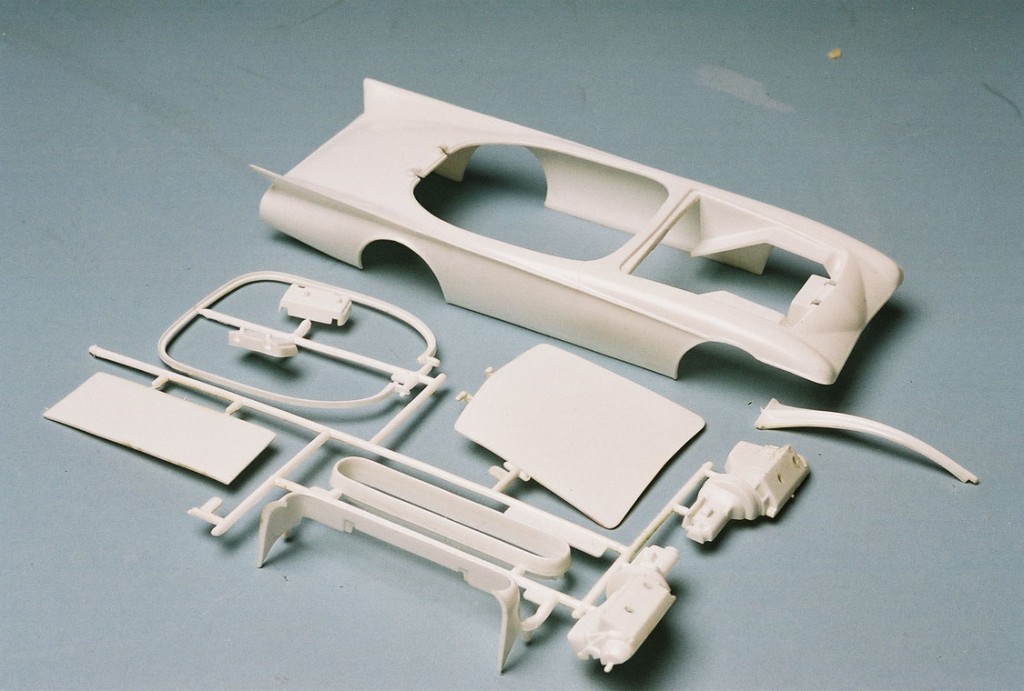

It is almost certainly true that the next Predicta kits will be those that this Project creates!
